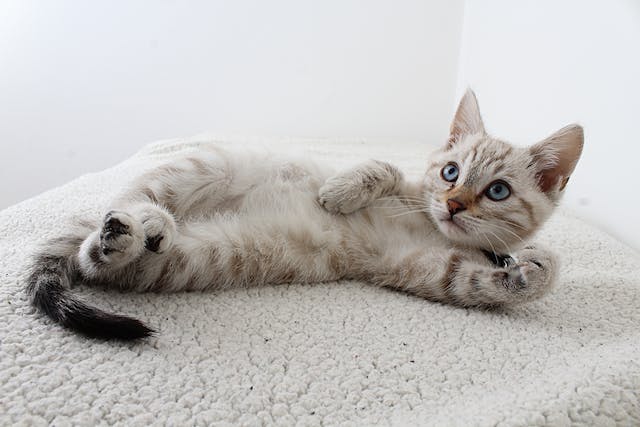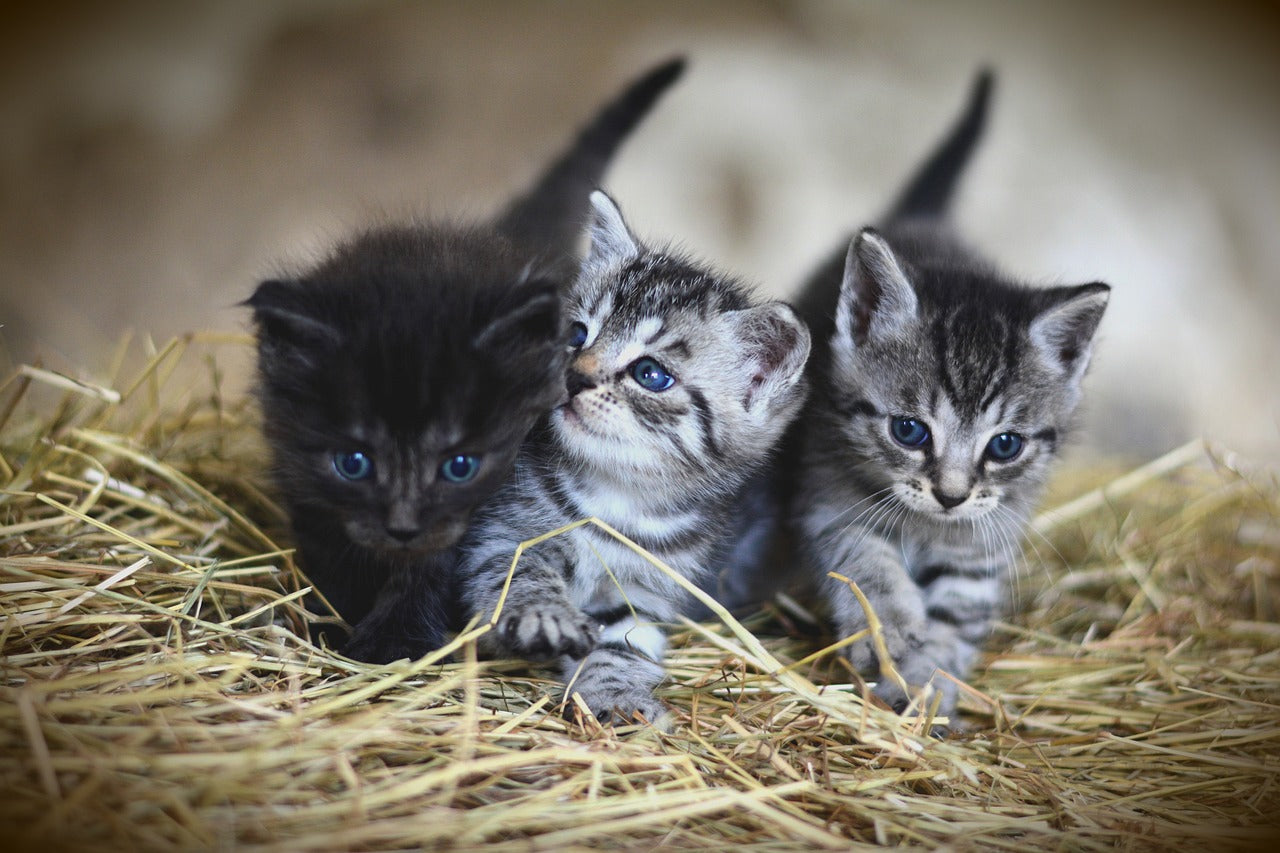In this blog post, we embark on a journey to uncover the truth about feline color perception. We'll delve into the intricate anatomy of a cat's eye, explore the fascinating world of photoreceptor cells, and dissect the science behind color perception. By the end of this exploration, you'll have a deeper understanding of whether cats are, in fact, color blind.
Feline Vision Anatomy
Before we can answer the question of whether cats are color blind, we need to understand the intricate anatomy of a cat's eye. Just like with humans, a cat's vision relies on the complex interplay of various components within their eyes. Let's take a closer look at how a cat's eye works.
A. Exploring the Structure of a Cat's Eye
Cornea and Pupil: The journey of vision begins as light enters the cat's eye through the cornea, the clear outer protective layer. The pupil, the adjustable opening in the colored part of the eye (iris), controls the amount of light that enters, much like a camera aperture.
Lens and Its Role in Focusing: Light continues its path through the lens, a transparent structure that helps to focus the incoming light onto the back of the eye. The lens plays a crucial role in creating a clear image on the retina.
Retina and Photoreceptor Cells: Situated at the very back of the eye, the retina is where the magic of vision truly happens. It contains specialized structures known as photoreceptor cells, which are responsible for converting light into a visible image.
B. How Photoreceptor Cells Function in Vision
In the realm of photoreceptor cells, two types take center stage:
Rods: Rod cells are primarily used for vision in low-light conditions and at night. They are highly sensitive to even minimal amounts of light, making them essential for night vision.
Cones: Cone cells, on the other hand, require more intense light to be activated and are intimately involved in how much color an animal perceives. Humans have three types of cones, allowing us to see the colors blue, green, and red. Differences in the types of cones an animal possesses, as well as the proportion of rods to cones, play a vital role in determining the richness of color perception.
With this fundamental understanding of a cat's eye anatomy and the crucial roles of rod and cone cells, we can now dive deeper into the world of feline color perception. In the following sections, we will explore whether cats truly see the world in black and white or if there's more to their colorful perspective.

Understanding Color Perception
To determine whether cats are color blind, we must first comprehend the complexities of color perception in the animal kingdom. Human vision serves as a useful benchmark, with our ability to see a wide range of colors thanks to the presence of three types of cone cells. However, this is just the beginning of the story.
A. Human Vision and the Three Types of Cones
In the world of human vision, we have three distinct types of cones, each sensitive to a specific range of colors: blue, green, and red. This intricate system allows us to perceive a vibrant spectrum of colors in our surroundings, from the azure of the sky to the rich reds of a sunset.
B. Comparative Analysis: How Other Animals See Colors
Birds and Ultraviolet Vision: Some animals, such as birds, possess a remarkable fourth type of photopigment that enables them to see colors in the ultraviolet spectrum. This extends their perception of the world into a realm that is invisible to us.
Nocturnal Animals' Limited Color Perception: On the opposite end of the spectrum, strictly nocturnal animals like raccoons have only one photopigment, which restricts their color perception to variations of a single hue, often red or green.
Dogs, Horses, and Cattle's Color Vision: Dogs, horses, and cattle fall into a category where they have two populations of cone photopigments. While they can see blue-violet colors, they struggle to distinguish between red, green, and yellow. This condition is somewhat analogous to the red-green color blindness found in some humans.
C. Cats: The Closest to Humans in Color Perception
Now, let's turn our attention back to our feline companions. Cats, intriguingly, are among the animals that come closest to humans in terms of color perception. Like us, they possess three populations of cone photopigments. However, the key difference lies in the number of cones they have compared to us.
While humans boast a far greater number of cones, approximately ten times as many as cats, our feline friends compensate in other ways. They have about six to eight times more rod cells, which enhances their night vision and peripheral vision. These adaptations make them exceptionally skilled at prowling in the dark, a testament to their predatory prowess.
Despite having three populations of cones, there remains an ongoing debate among scientists about the precise range of colors that cats can perceive. Some experts suggest that cats may see the world in shades of blue or gray, while others propose the possibility of red-green color blindness, akin to that found in dogs.

Debunking Cat Color Blindness Myths
The idea of cats being color blind has persisted for years, often leading to misconceptions about the feline world of vision. In this section, we will delve into the myths surrounding cat color blindness and explore the scientific realities that challenge these beliefs.
The notion of cat color blindness stems from the observation that cats may not react to certain colors as strongly as humans do. However, this does not necessarily equate to complete color blindness. To better understand the issue, it's essential to consider the following:
A. The Debate Between Shades of Blue or Red-Green Color Blindness
One prevalent belief is that cats see the world predominantly in shades of blue or gray. This theory suggests that while cats may perceive some colors, their spectrum is limited compared to humans. However, this perspective is not without its critics.
An alternative hypothesis proposes that cats may have a form of color blindness similar to red-green color blindness in humans. This condition makes it challenging to distinguish between specific colors, particularly reds and greens. The ongoing debate among scientists highlights the complexity of understanding feline color perception fully.
B. The Role of Cone Population and Concentration
To decipher the mystery of cat color perception, it's crucial to consider the role of cone cells. Cats, like humans, possess three populations of cone photopigments. However, the reduced number of cones in cats compared to humans raises questions about their color vision.
While humans have a significantly higher concentration of cones, cats compensate with a greater number of rod cells, particularly useful for low-light conditions. This unique adaptation contributes to their exceptional night vision and peripheral vision.
As we continue our exploration of feline vision, we'll delve deeper into the nuances of how cats perceive colors. While the debate over specific details may persist, one thing is clear: cats do perceive a range of colors, albeit different from our own rich and vibrant palette. Stay with us on this journey as we uncover more about the colorful world of cats.

Unique Aspects of Cat Vision
It's time to delve into the unique aspects of cat vision that set them apart from humans and other animals. While cats share some similarities with us, they also possess fascinating characteristics that make their vision truly exceptional.
A. Night Vision Par Excellence
Cats are renowned for their ability to see in low-light conditions, earning them the title of crepuscular hunters. Their evolutionary adaptations, including rod-rich retinas and the tapetum lucidum, contribute to their superior night vision. This ability allows them to stalk prey under the cover of darkness with remarkable precision.
B. Near-Nearsightedness
Unlike humans, who can spot objects at a distance, cats are a bit nearsighted. This means that while we might see an object clearly from 100 to 150 feet away, a cat may not discern it until it's about 20 feet away. Their vision is finely tuned for close-quarters hunting, making them exceptional ambush predators.C. Unique TV Viewing Experience
Have you ever tried watching television with your cat, only to find them disinterested or puzzled by the images on the screen? The reason behind this lies in the rapid recharge rate of cone cells in a cat's eye. While humans can perceive a continuous image on TV screens that flicker at around 60 Hz, cats require a much higher recharge rate, around 70-80 Hz. This means they perceive the images on the screen as flickering and interrupted rather than continuous motion.
D. The Art of Seeing Movement
Cats excel at detecting quick movements in low-light conditions, a skill honed through evolution. Their exceptional motion detection serves them well in their role as predators, allowing them to track and pounce on prey with incredible accuracy.
E. Embracing the Feline Perspective
While our feline companions may see the world in ways we can't fully comprehend, it's essential to appreciate their unique vision. Their ability to thrive in the dark, coupled with their prowess in spotting movement, highlights the remarkable adaptations that make them agile hunters.
As cat owners, understanding these distinctive aspects of cat vision allows us to better appreciate the world through our cats' eyes. While we may not fully grasp their colorful perspective, we can celebrate the extraordinary qualities that make cats such intriguing and captivating companions.
In our final section, we'll conclude our exploration of feline vision, summarizing the key takeaways and shedding light on the enduring mysteries that continue to surround this captivating aspect of our beloved cats' lives. Stay with us as we wrap up this enlightening journey into the world of cat vision.


